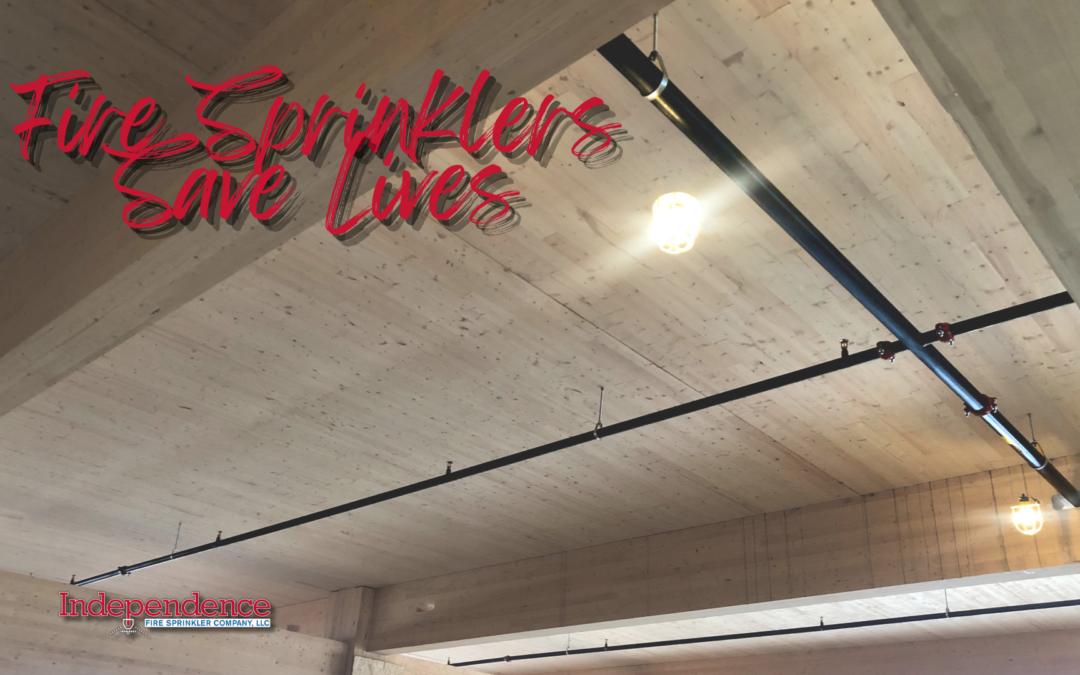Fire sprinklers are a crucial component of building safety, designed to detect and suppress fires early, significantly reducing the risk of injury, death, and property damage. Unlike other fire safety measures that rely on human action, such as fire extinguishers, sprinklers activate automatically in response to heat, providing fast and targeted suppression that can make the difference between a minor incident and a catastrophic fire. Here’s a closer look at how fire sprinklers work and why they are so effective at saving lives.
-
- Early Detection: Fire sprinklers are equipped with sensitive heat-activated devices, typically a glass bulb or fusible link, which activates when exposed to high temperatures from a fire. Each sprinkler head is designed to activate individually when the temperature in its immediate area reaches a certain threshold, usually around 135-165°F. This early detection allows sprinklers to respond quickly, even before the fire has time to spread. By containing or controlling the fire at its source, sprinklers can prevent it from escalating into a more dangerous situation. This early intervention is critical for protecting both occupants and the building structure.
- Automated, Targeted Suppression: Once activated, a fire sprinkler releases a stream of water directly onto the fire. Unlike a fire extinguisher, which requires someone to be present and use it correctly, sprinklers operate automatically, delivering water exactly where it’s needed. Importantly, only the sprinkler heads in the immediate vicinity of the fire are activated—this means that a fire in one room won’t trigger sprinklers throughout the entire building. This targeted approach helps to quickly control or extinguish the fire while minimizing water damage to unaffected areas.
- Reducing Smoke Inhalation: Many fire-related deaths are caused by smoke inhalation rather than direct exposure to flames. In fact, smoke from a fire can incapacitate people within minutes, preventing them from escaping and leading to fatal consequences. By controlling the fire early, sprinklers reduce the production of smoke and toxic gasses, making it easier for occupants to breathe and navigate their way out of the building. This early suppression also helps keep exit routes clear, allowing for safer evacuation.
- Safety During Evacuation: One of the primary roles of fire sprinklers is to buy time. In the event of a fire, every second counts, especially in multi-story buildings, where stairways and corridors can fill with smoke and heat very quickly. Sprinklers contain the fire and limit its growth, giving occupants more time to evacuate safely. This is particularly crucial in high-occupancy buildings like schools, hospitals, and office complexes, where the sheer number of people can make rapid evacuation challenging. By slowing the spread of the fire, sprinklers help prevent panic and ensure a more orderly and safe evacuation.
- Minimizing Fire Spread: Fires that are allowed to grow unchecked can spread rapidly from room to room or even from building to building, especially in dense urban areas. Fire sprinklers can stop the fire from spreading beyond its point of origin, protecting not only the people in the immediate area but also neighboring properties. This containment is essential in preventing larger fires that can destroy entire buildings and potentially endanger entire communities. By confining the fire to a small area, sprinklers play a critical role in protecting both lives and property.
- Improving Response Time: When firefighters arrive at the scene of a fire, their job is made significantly easier if the fire has already been partially controlled by the building’s sprinkler system. Sprinklers can reduce the size and intensity of the fire, allowing firefighters to focus on fully extinguishing it and performing rescue operations. The early suppression provided by sprinklers can mean the difference between a manageable situation and a full-blown structural fire that is more difficult and dangerous to control. In many cases, sprinklers have already done the bulk of the work by the time firefighters arrive, reducing property damage and saving lives.
Fire sprinklers are a life-saving technology that significantly reduces the risk of injury, death, and property damage in the event of a fire. By providing early detection, targeted suppression, and preventing the spread of fire, sprinklers protect both people and property. Their ability to reduce smoke inhalation, enhance evacuation safety, and support firefighter response makes them an essential feature of modern fire protection systems. Whether in residential buildings, commercial spaces, or industrial facilities, fire sprinklers are a crucial component of comprehensive fire safety planning, ensuring that fires are quickly and efficiently controlled to save lives and minimize damage.

